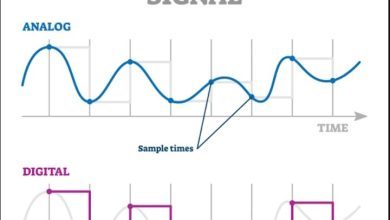
STIOCHIOMETRY
- The number of atoms in one mole of a substance is equal to?Atomic number. Avagadro’s constant(6.02 × 1021)
Answer
One mole of a substance always contains the avagadro.s number (6.02 × 102) of particules (atoms, ions, molecules, electronics, e.t.c). just like when you say one dozen which means it contains 12 particles. So, if one say one(1) mole of atoms, it means there are 6.02× 1021) - What volume of 1.5M solution of KOH would contain 0.045 moles
67.50cm3
30.00cm3
6.75 cm3
3.00cm3
Solution
Formulae for moles
No. of moles = mass/molar mass
No. of moles = volume at s.t.p/ molar volume
No. of moles = concentration mole × volume/ 1000
No. of moles = no. of particles/ avagadro’s constant
concentration mole = 1.5M
volume = ?
No. of moles = 0.045 moles
SO THE BEST FORMULAE THAT WORKS FOR IT IS
No. of moles = concentration mole × volume/ 1000
0.045 = 1.5 × volume/ 1000
Volume = 45/1.5
= 30.00 cm3 [B] - 56.00cm3 of a gas at S.T.P weighed 0.11g. what is the vapour density of the gas? [molar volume of a gas at S.T.P = 22.4dm3]11.00
22.00
33.00
44.00
Solution
Volume = 56.00 cm3, vapour density = ?, molar volume = 22.4dm3, mass = 0.11g
First let’s find molar mas
Molar mass = mass/ no. of moles
no. of moles =
No. of moles= volume at S.T.P/molar volume
= 56/22400
=2.5×10-³
Molar mass=mass/no. of moles
=0.11/2.5×10-³
= 44gmol-¹
Vapour density=molar mass/2
= 22.00[B]
- What volume will 0.5kg of H2 occupy at S.T.P? [H=1, 1 mole of a gas occupy 22.4dm³ at S.T.P]A. 2.24dm³. B. 5.60dm³. C. 11.20dm³ D. 44.8.dm³
Solution
Mass= 0.5kg, molar mass of hydrogen = 2, molar volume=22.4dm³
no. of moles = mass/molar mass
0.5/2 = 0.25moles
No. of moles= volume at S.T.P/molar volume
Volume = No. of moles × molar volume
=0.25×22400
= 5.60dm³ [B]
- A metal M forms two types of chlorine, Mcl2 and Mcl3 which of the following laws best explains the relationship between the chlorides? Law of
A. Conservation of mass. B. Definte proportion. C. Multiple proportion. D. Reciprocal proportion
Answer
When two elements combine to form more than one compound with the mass of one fixed and the mass of the other In a simple ratio, it explains law of multiple proportion. Since the combination of the elements is in 1:2 and 1:3 - The volume occupied by 0.4g of hydrogen gas at S.T.P is [H=1, molar volume at S.T.P = 22.4dm³]A. 2.24dm³. B. 4.48dm³. C. 22.4dm³. D. 44.8dm³
Solution
Mass = 0.4g, molar volume= 22.4dm³, volume at S.T.P = ? Molar mass of hydrogen=2
No.of moles = mass/molar mass
0.4/2 = 0.2moles
No. of moles = volume at S.T.P/molar volume
Volume = No. of moles × molar volume
0.2×22400 = 4.48dm³ [B] - Consider the reaction represented by the equation below XNH3(g).+ yCL2(g) → ZHCL(g) + N2(g)
Find the values of x,y and z respectively.
Answer
It’s the simplest thing on planet earth
Just look for what best can balance the production. If we put 6 as Z, hydrogen becomes 6, chlorine = 6. In the L.H.S chlorine is 2, what will make chlorine 6 ( let y = 3, because 3×2 = 6) and nitrogen is 2 in the L.H.S while hydrogen is 6. What could make hydrogen 6 in the L.H.S, just make X=2, 2NH3( the equation is now balance.
XNH3(g).+ yCL2(g) → ZHCL(g) + N2(g)
2NH3(g) + 3CL2(g) → 6HCL(g) + N2(g)
X, y and z = 2,3 and 6 - 3Cu + pHNO3 → 3Cu(NO3)2 + 4H2O + XNO in the equation above, the values of p and x respectively are
A. 1 and 2. B. 2 and 3. C. 6 and 2. D. 8 and 2
Solution
The answer is A
To get the value of A is simple
a. Frst let’s look at what letter p is attached with (it’s attached with HNo3)
b. What’s H in the R.H.S, sure it’s 8,(4×2) so at the L.H.S it’s supposed to be 8 too. And if 8 is P, the NO3 Will be 24
8:24 = 1:3(Ans) - What is the amount (in moles) of hydrogen gas that would be produced if 0.6 mole of hydrochloric acid reacted with excess zinc according to the following equation?
Zn(s) + 2HCL(aq) → ZnCL2(aq) + H2(g)
A. 0.1 mole. B. 0.2 mole. C. 0.3mole. D. 1.0mole. E. 2.9mole
Answer
When you have reaction stochiometry, you must be able to relate their mole ratio, because this tells a lot about the completion of the reaction. From the balanced equation, 2 moles of HCL reacts with 1 mole of Zn to give 1 mole of H2. Therefore, 0.6 mole of HCL will reacts with 0.3 mole of Zn to give 0.3mole H2
And C - What volume of 0.5moldm-³ H2SO4 will exactly neutralize 20cm³ of 0.1moldm-³ NAOH solution?
A. 2.0cm³. B. 5.0cm³. C. 6.8cm³. D. 8.3cm³
Solution
Ca=0.5moldm-³, Cb= 0.1moldm-³, VA =?, Vb= 20cm³, na
11. At S.T.P how many litres of hydrogen can be obtained from the reaction of 500cm³ of 0.5M H2SO4 with excess zinc metal? (Gram molecular volume of H2 = 22.4dm³)
A. 22.4dm³. B. 11.2dm³. C. 6.5dm³. D. 5.6dm³. E. 0.00dm³
Solution
Write a balanced equation to know the mole ratio in order to use the known to calculate the unknown
H2SO4(aq)+Zn(s)→ZnSO4(aq)+H2(g)
The question asked is the volume at S.T.P. I want to believe you know what formula to use? Good! but, we have to know the mole of the hydrogen gas from the parameters given.
Volume at S.T.P = 500cm³
Concentration = 0.5M
Molecular volume= 22.4dm³
No. of moles =( volume×concentration)/1000
500×0.5/1000 = 0.25moles
Since the mole ratio is 1:1
The volume of H2 at S.T.P = no. of moles× molar volume
0.25×22400 = 5.6dm³(D)
- Mg(s) + 2Hcl(aq) → MgCL2(g) + H2(g). From the given equation, what mass of hydrogen would be produced if 12.0g of magnesium reacted completely with dilute hydrochloric acid? (H=1, Mg=24)
A. 1.0g. B. 2.0g. C. 6.0g. D. 12.0g. E. 24.0g
Since you are asked to calculate mass, it means you’re using equation (I) but, you also need to know the numbers of mole.
Mass = 12.0g, molar mass of magnesium,Mg = 24
No. Of moles= mass/molar mass
12/24 = 0.5moles
Mass of hydrogen = no. Of moles × molar mass of hydrogen
0.5×2 = 1g(A) - The mass of 800cm³ of a gas x at S.T.P is 1.0g. what is the molar mass of X? [ 1 mole of gas at S.T.P occupies 22.4dm³]A. 18.0gmol–¹ B. 22.4gmol–¹ C.28.0gmol–¹. D. 36.0gmol–¹
Volume at S.T.P = 800cm³, mass = 1.0g, molar mass = ?
No of moles= volume/molar volume
800/22400 = 0.036mole
No. of moles= mass / molar mass
Molar mass=mass/no. of moles
1/0.036 = 27.8gmol–¹
≈ 28gmol–¹ (C(
14.1.00g of the oxide of metal X ( atomic mass= 64) gave 0.80g of the metal when reduced with hydrogen. The formula of the oxide is?
A. X2O. B. XO. C. XO2. D. X2O3. E.X3O4
Mass= 1.00g, we are going to use empirical formula method to get their simple ratio, since the mass of X is 0.8g, so the mass of oxygen will be 0.2g
X. Y
Mass/molar mass mass/molar mass
0.8/64. 0.2/16
0.0125. 0.0125
1:1. The final formula is XO (B)


